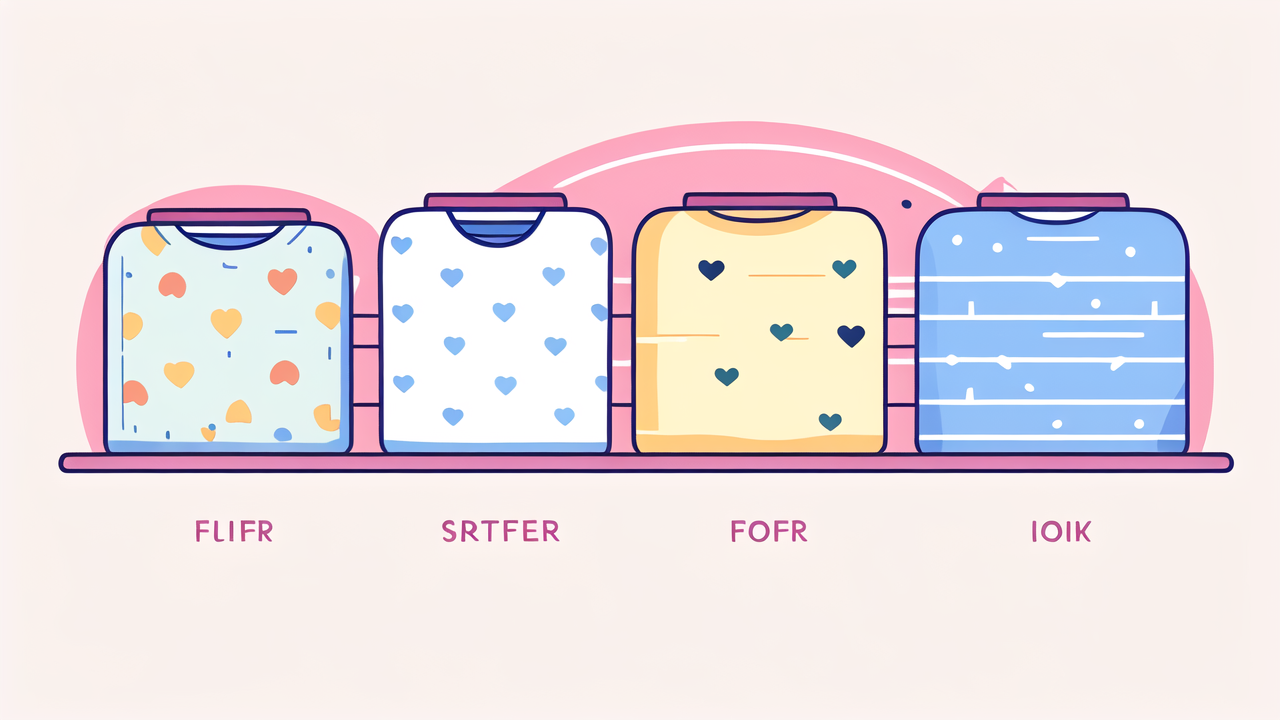
Winter Quilts vs. Baby Blankets: Which is Best for Your Little One?
Understanding the Benefits of Winter Quilts for Babies
The Warmth of Winter Quilts: A Comforting Nighttime Ritual
Winter quilts offer a cozy and warm sleeping environment for babies. They provide a snug cocoon that mimics the comfort of the womb. This can help little ones feel secure and sleep better. The extra layers in quilts trap heat effectively, keeping babies warm even on cold nights. Many parents find that a winter quilt becomes part of a soothing bedtime routine. The weight and texture of the quilt can be calming for infants. It's important to choose the right thickness for your baby's age and room temperature. A good winter quilt can make nighttime a peaceful and comfortable experience for your little one.

Durability and Sustainability: Why Winter Quilts Last
Winter quilts are often more durable than regular baby blankets. They are made with sturdy materials and strong stitching. This means they can withstand frequent washing and daily use. Many quilts are passed down through generations, becoming family heirlooms. The longevity of winter quilts makes them a sustainable choice for eco-conscious parents. They reduce the need to buy new blankets as your child grows. Quality quilts can be used for years, even as your baby becomes a toddler. The durability of winter quilts also means they retain their warmth and shape over time. This makes them a reliable choice for keeping your baby cozy night after night.
Personalization: The Joy of Creating Your Own Winter Quilt
One unique aspect of winter quilts is the ability to personalize them. Many parents choose to make their own quilts or have them custom-made. This allows for a special touch that reflects your family's style. You can select fabrics, colors, and patterns that match your nursery decor. Some parents incorporate meaningful symbols or family traditions into the quilt design. Creating a quilt can be a bonding experience for family members. It's a way to craft a meaningful gift for your baby that will last for years. Personalized quilts often become cherished keepsakes, holding memories of your child's early years. The process of making or choosing a custom quilt adds an extra layer of love to your baby's bedding.
Comparing Baby Blankets: Quality and Usage
Material Matters: What's Best for Your Baby?
When it comes to baby blankets, the material is crucial. Cotton is a popular choice due to its softness and breathability. It's gentle on a baby's sensitive skin and easy to wash. Bamboo is another great option, known for its hypoallergenic properties. Wool blankets are warm but may be too scratchy for some babies. Fleece is soft and cozy but can cause overheating if not used carefully. Synthetic materials like polyester are durable but may not be as breathable. Consider your climate and your baby's skin sensitivity when choosing. Natural fibers are often preferred for their comfort and ability to regulate temperature. Always opt for materials that are certified safe for babies to avoid harmful chemicals.

The Practical Side: Ease of Use and Care for Baby Blankets
Baby blankets are generally easier to use and care for than winter quilts. They're lightweight and easy to pack for travel or daycare. Most baby blankets can be machine washed and dried, making them convenient for busy parents. They come in various sizes, from small security blankets to larger ones for playtime. Baby blankets are versatile and can be used for swaddling, as a changing pad, or for tummy time. They're also easier to adjust if your baby kicks off the covers during sleep. However, they may not provide as much warmth as quilts in colder months. Consider having a mix of light blankets for everyday use and warmer options for colder nights.
Price Point: How Winter Quilts and Baby Blankets Stack Up
When comparing costs, baby blankets are usually more affordable than winter quilts. You can find quality baby blankets at various price points to suit different budgets. Winter quilts, especially handmade or customized ones, tend to be more expensive. However, the durability of quilts means they can be a good long-term investment. Baby blankets may need to be replaced more often as they wear out or your child grows. Consider the lifespan of each option when evaluating the overall cost. Some parents choose to have a few inexpensive blankets for daily use and invest in one special quilt. Factor in the cost of care and maintenance when making your decision. High-quality items in either category may be pricier but often last longer.
Making the Right Choice: Safety and Regulations
The Importance of Safe Bedding for Babies
Safety is paramount when choosing bedding for your baby. Loose bedding can pose suffocation risks for infants. It's crucial to follow safe sleep guidelines recommended by pediatricians. For the first year, babies should sleep on a firm mattress with a fitted sheet only. Blankets, quilts, and pillows should be kept out of the crib to prevent SIDS. As your baby grows, you can gradually introduce appropriate bedding. Always ensure that any bedding used is breathable and the right size for your baby's bed. Monitor your baby's temperature to avoid overheating. Remember that a comfortable room temperature is often enough for young infants. When in doubt, consult your pediatrician about the safest sleep practices for your baby.

Regulations and Standards for Baby Blankets and Quilts
Baby bedding is subject to strict safety regulations in many countries. Look for products that meet or exceed these standards. In the US, the Consumer Product Safety Commission sets guidelines for infant bedding. These include flammability standards and restrictions on certain chemicals. Organic certifications can ensure that materials are free from harmful substances. Check for labels indicating compliance with safety standards in your region. Reputable manufacturers will clearly state their safety certifications. Be cautious of second-hand items that may not meet current safety standards. When purchasing online, verify that the seller follows safety regulations. Don't hesitate to ask questions about the safety features of any baby bedding you're considering.
Tips for Choosing a Winter Quilt or Baby Blanket
When selecting bedding for your baby, consider these key factors:
- Age appropriateness: Choose options suitable for your baby's developmental stage.
- Size: Ensure the bedding fits properly in the crib or bed without excess material.
- Material: Opt for breathable, hypoallergenic fabrics that are gentle on baby's skin.
- Season: Select appropriate weight and warmth for your climate.
- Ease of cleaning: Look for machine-washable options for convenience.
- Safety features: Check for secure stitching and avoid items with small, detachable parts.
- Versatility: Consider how the item can be used as your child grows.
- Quality: Invest in well-made items that will withstand frequent use and washing.
- Personal preference: Choose designs and colors that you and your baby will enjoy.
Remember, safety always comes first. Consult with your pediatrician if you have any concerns about your baby's sleep environment. With careful consideration, you can find the perfect balance of comfort, safety, and style for your little one's bedding needs.
